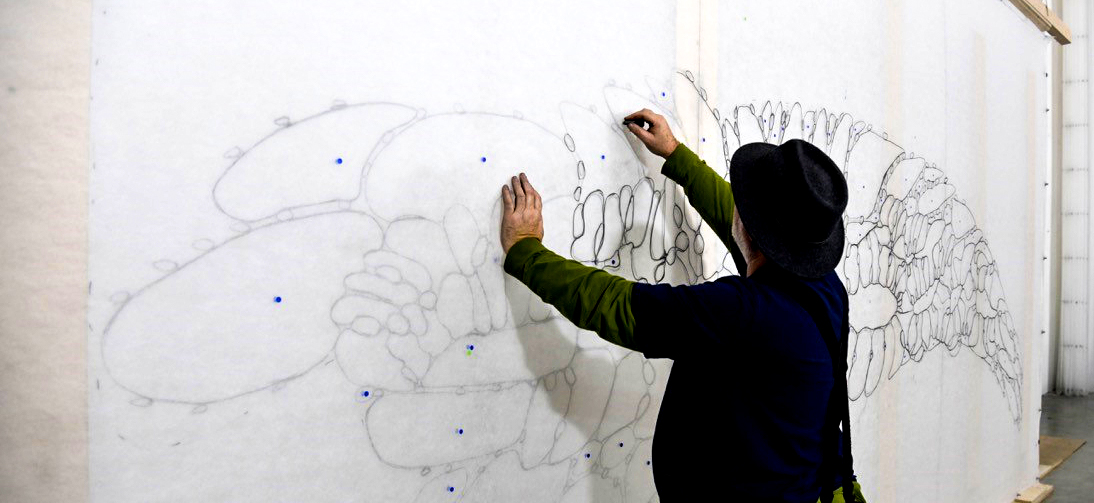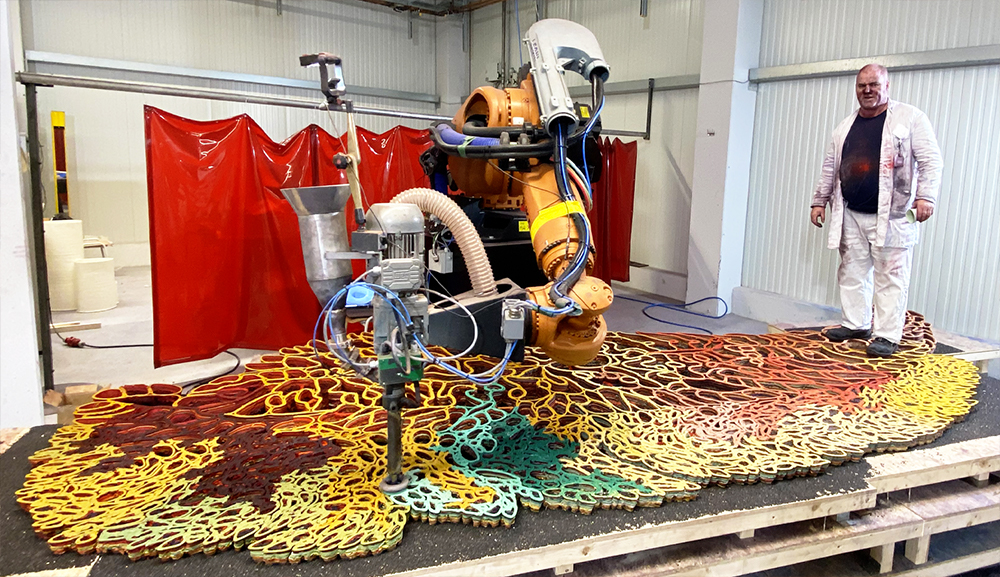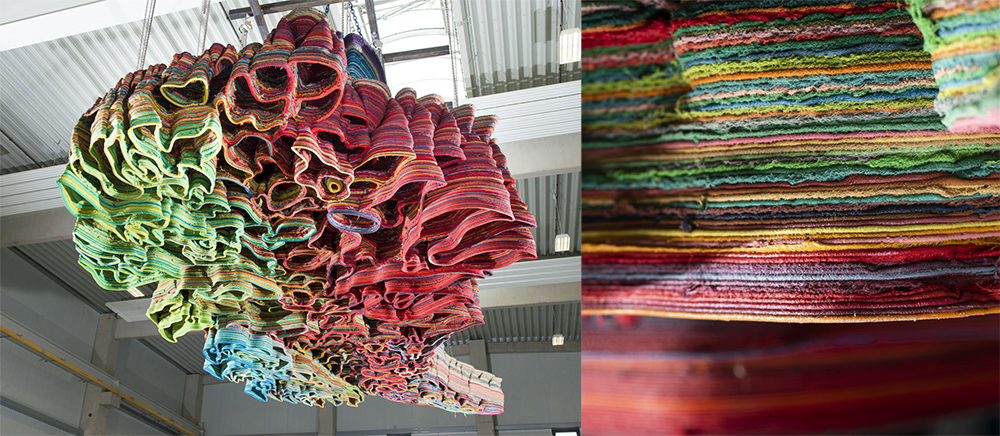
Art and technology, automation and hand-crafting mingle in a stunning new 3D printed sculpture by Peter Lang, a German painter and printmaker best know for semi-abstract landscapes.
Entitled “Silent Orchestra”, the 18-foot long hanging sculpture’s form was inspired by the organic shape of hornet and wasp nests. A multitude of nature-inspired tubes are arranged in a honeycomb pattern that actually exhibits sound-absorbing characteristics.
It took the artist more than 10 months to sketch the work by hand, layer by layer, on 3-by-6-meter fleece sheets, which were then hung and photographed. The individual images were digitally processed to create a 3D computer model. The digital file provides the pathway for the robotic arm printer equipped with an extrusion nozzle to apply material layer by layer.

To achieve the sculptures homogeneous and perfectly parallel layers over the entire height of the object, the development engineers at 3D printing company Additive Tectonics, programmed a complex algorithm that enabled the extrusion nozzle to traverse the entire object without ever crossing its own path which would create an unwanted overlap.
The sculpture is 3D printed from Arboblend, a biocompatible plastic that Peter Lang infused with beer as a natural adhesive. To achieve its rich individual layer coloring, the artist worked alongside the robot printer during the extrusion process to hand apply colored granules. The full phase of the construction took two months.

The work was commissioned to have a noise-dampening effect in the client’s meetings room so Lang worked in collaboration with acoustics experts from Rosenheim Technical University of Applied Sciences. The process-related rough and fibrous surface, in combination with the bionic geometry of the art object, provided the intended, sound-optimizing effect.
Within two months, the bionically shaped sound absorber was created as a unique “analog-digital-analog” work of art, Lang says, combining old artistic craftsmanship and innovative digital manufacturing technology in an entirely original way.
Lead image source: The artist Peter Lang and his sculpture, Silent Orchestra printed at Additive Tectonics GmbH.
License: The text of "3D Printing With Robots and Beer" by All3DP Pro is licensed under a Creative Commons Attribution 4.0 International License.